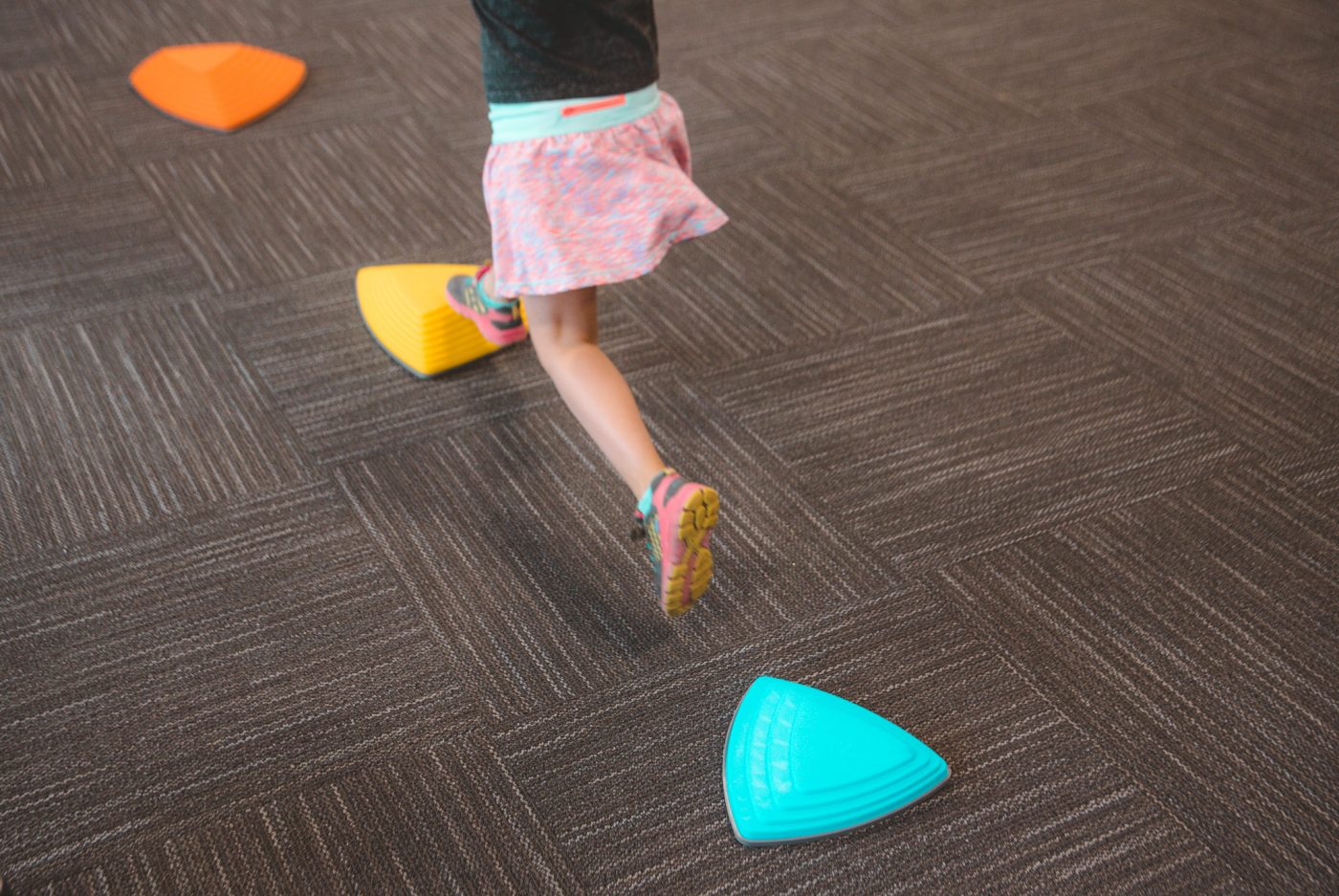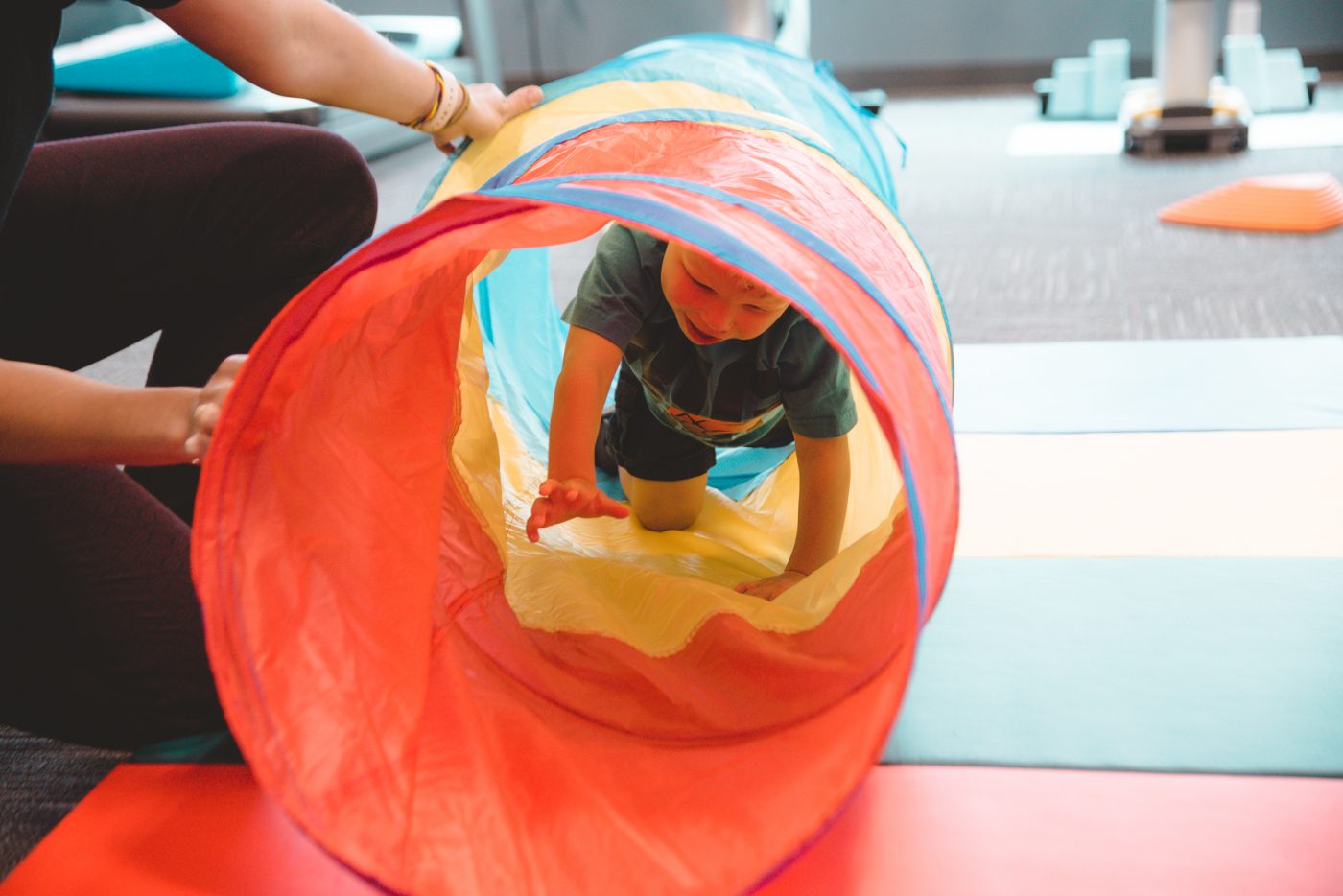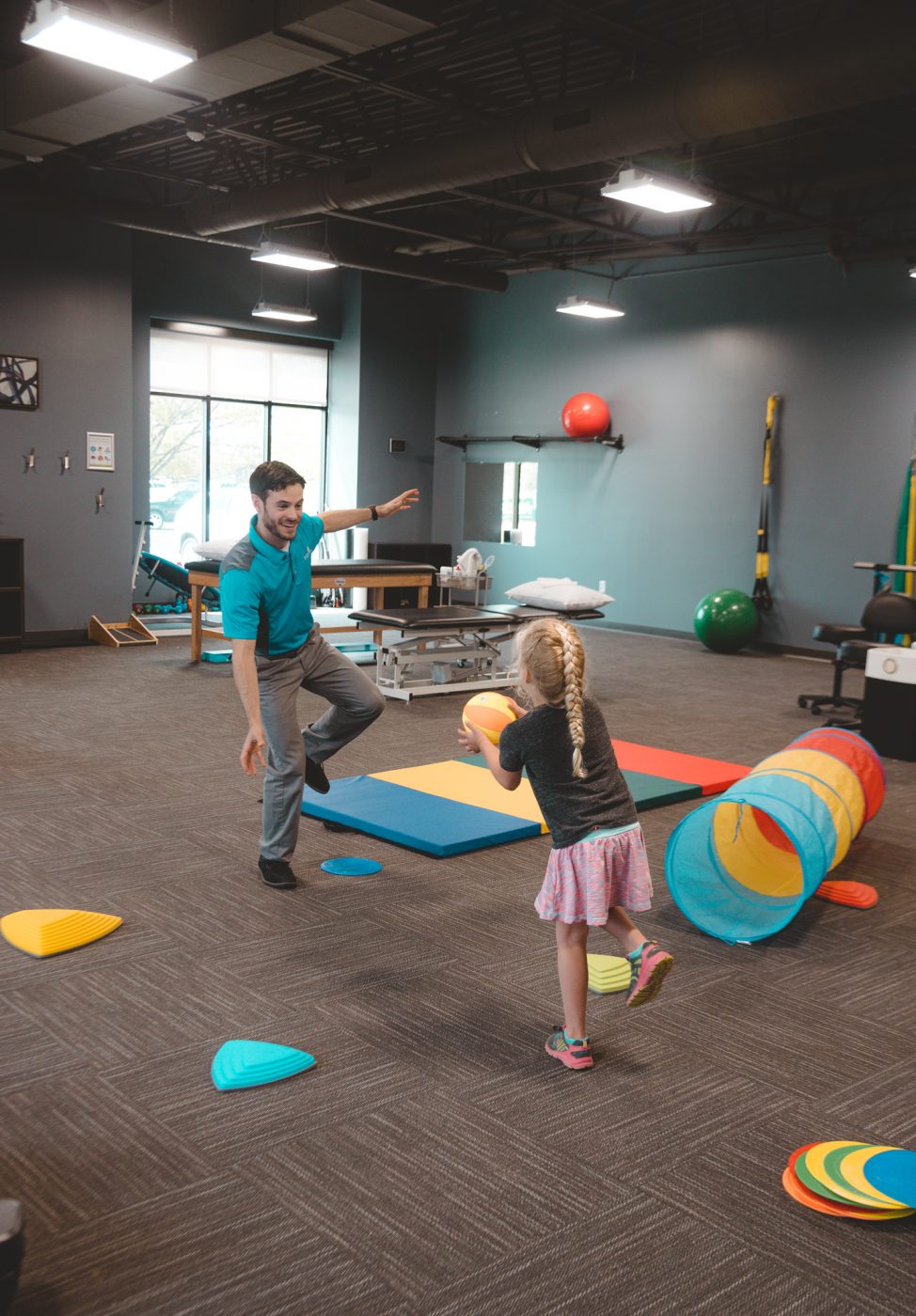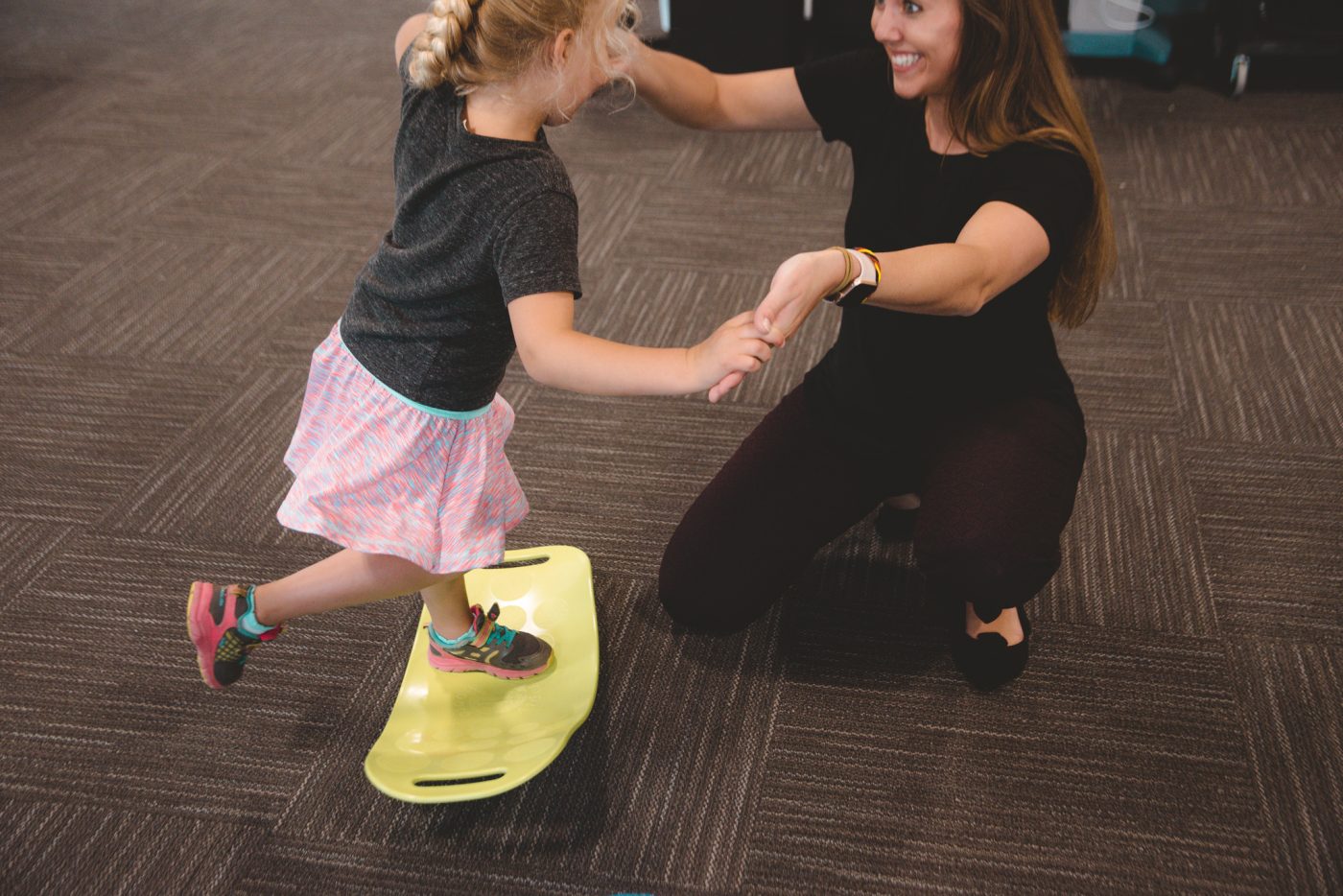The movement of the human body is incredible. After fourteen years of study and practice in physical therapy, I am still constantly amazed at how the human body moves, from the “simple” action of walking to the graceful leaps of a professional dancer. When one considers how much brain and body activity goes into any movement, it is a wonder the human species can be successful at a motor/movement task at all.

Take walking for instance. Many might consider it “simple,” and many may take it for granted, but walking is incredibly complex. The nervous system takes information about body position from the ears, eyes, and joints to the brain; the brain processes this information to create a plan to get from point A to point B (including speed, obstacle management, etc); and the brain sends signals to the muscles of the entire body (not just the legs) to turn muscles on and off in a timing sequence more complex than any choreographed dance routine in a Broadway musical.
With so many components to human movement, it is no surprise there are many ways for the operation of movement—from processing to planning to executing—to be interrupted or altered. One cause is Developmental Coordination Disorder, and it presents in school-aged children. Approximately 5% of kids ages 5-11 are diagnosed with Developmental Coordination Disorder (DCD).
DCD has also been referred to as “Developmental Clumsiness,” “Developmental Dyspraxia,” and “Clumsy Child Syndrome.” It is most often presented as a child having difficulty performing the same motor/movement skills as other kids their age, and often makes them appear clumsy or uncoordinated. This can interfere with their ability to function in school, participate in play, and complete home activities. Characteristics include:

- Poor strength
- Poor visual perception
- Poor spatial awareness or body awareness
- Difficulty with two-handed skills
- Joint laxity (above average flexibility in the joints)
- Gait issues (high stepping, shuffling, foot slapping)
- Difficulty holding upright posture
- Difficulty with eye-hand coordination tasks
This list does not include all the possible characteristics that may be seen in a child with DCD, and a child does not have to present with all of the them to be diagnosed with DCD. Since DCD is caused by difficulty planning out motor tasks within the brain, children with DCD can present with a wide range of functional challenges. Some children may have more trouble with walking steadily and others may be more limited in fine motor task like drawing. There may be difficulties with attention and language as well.
DCD is only diagnosed when no other medical conditions are the cause for the coordination difficulties. This means it is diagnosed by testing for and eliminating the possibility of other medical causes such as neurological conditions (i.e. cerebral palsy) or visual difficulties (i.e. being far-sighted or near-sighted). There is no official test that confirms the presence of DCD.
As mentioned, DCD is caused by the brain having difficulty planning how to carry out a movement task. We can use an orchestra as an example. The musicians and their instruments are the muscles, the conductor is the brain. The sheet music that the conductor is reading is the sensory information the brain is receiving from the nerves in the body. When everything is working well together, the result is beautiful music. In the body, this is seen as performing a movement task successfully like stepping over a rock on the ground without tripping.

In DCD, the muscles and nerves are in working order. The instruments are tuned, the musicians are well-trained, there is no issue with them. The sheet music is readable and well-written. However, the conductor (the brain) has difficulty reading the music and performing the correct cues at the right time for the musicians: he has difficulty leading a steady beat, he signals the brass to play too loud, he waves the cymbals to clash too late. The result is a clatter of off-rhythm sounds instead of a graceful flow of music. In the body, the brain has difficulty planning out the motor sequence needed to complete a movement, and signals the muscles to move too soon, too late, with too much force, not enough force, or in the wrong direction. The result is movement that appears uncoordinated or clumsy.
How does one improve the orchestra’s musical performance? By having the conductor practice more. Similarly, to improve the motor skills of someone with DCD, that person needs extra practice performing the tasks they have difficulty with. The difficult tasks actually become the treatment. If a child has trouble moving around objects without knocking into them, the treatment is to practice getting through an obstacle course without touching the obstacles. If a child has trouble catching a ball, the treatment is to practice catching a ball.

Simply practicing the task can improve the skill. However, the effectiveness of practice can be optimized in a few ways.
First, the treatment should be specific to the movement skill the child has difficulty performing. For example, if a child has trouble stepping over obstacles, an obstacle course should focus on stepping over hurdles or other objects. Second, the difficulty of the motor task being practiced should be at a level that allows the child to be successful most of the time. When practicing catching, the ball should be big enough and be moving just slow enough for the child to be able to catch it about 75% of the time. This helps motivation and also pushes the brain to modify its movement planning to be successful.
Third, the motor task should be practiced frequently—a little every day if possible. Thousands of repetitions are needed to build the connections between neurons in the brain to be proficient at a new motor task. Fourth, practice should be fun! Play is the best form of learning a new motor skill in a child. It invites a child to explore how to move, and sustains the motivation needed to practice a movement over and over again.
The skilled care of a physical therapist or occupational therapist is very beneficial to build a program that uses these four principles. A therapist specializing in pediatrics can accurately identify the reason a child is having trouble with a motor skill, and create challenges—disguised as games—that has the right amount of challenge and focuses on practicing the desired skill.

Though treatment for DCD might focus on specific movements to practice, getting general movement and exercise is important for all children (and adults!) including those with DCD. Play and exercise has a positive effect on every system in the body, from muscle strength to cardiovascular endurance to brain development. There are several resources available to parents to generate ideas for play and exercise, one being the “Play 60” campaign endorsed by the NFL. Below are links to “Play 60” and some videos I created for kids to explore moving their bodies. If you are a parent and have a child you would like to be screened by one of our skilled pediatric therapists, feel free to contact us!
Happy moving!


